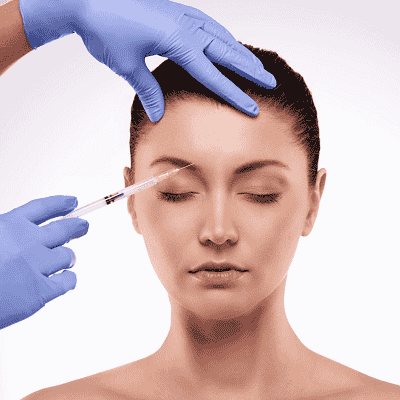The Benefits of Botox Beyond Wrinkle Treatment
Introduction
Botox is widely recognized for its effectiveness in reducing wrinkles and fine lines, offering a youthful appearance. However, the uses of Botox extend far beyond its cosmetic applications. This powerful neurotoxin, derived from Clostridium botulinum bacteria, has proven to be beneficial in treating a wide range of medical conditions. In this article, we will explore the many therapeutic benefits of Botox at Botox injections Clinic in Oman beyond wrinkle reduction, including its role in treating migraines, hyperhidrosis, muscle spasms, and more.

What is Botox?
Botox, short for botulinum toxin type A, is a substance that temporarily paralyzes or weakens muscles by blocking the release of acetylcholine, a neurotransmitter that signals muscle contraction. While it is most commonly known for cosmetic purposes, its muscle-relaxing properties make it a valuable medical tool. The effects of Botox last for several months, after which the muscles regain function, necessitating repeated treatments for continued benefits.
Medical Applications of Botox
1. Chronic Migraine Relief
Botox has become a highly effective treatment for people suffering from chronic migraines. In 2010, the FDA approved Botox for the treatment of migraines in adults who experience 15 or more headache days per month. The injections, administered around the head and neck, help prevent migraines before they start by blocking pain pathways. For many patients, Botox has significantly reduced the frequency and intensity of migraine episodes, improving their overall quality of life.
2. Hyperhidrosis (Excessive Sweating)
Another non-cosmetic use of Botox is for the treatment of hyperhidrosis, a condition characterized by excessive sweating, typically in areas like the underarms, hands, feet, and face. Botox injections temporarily block the nerves responsible for triggering sweat glands, helping to reduce perspiration. This treatment is particularly useful for individuals who do not respond well to traditional treatments like antiperspirants or medications. Results can last from six to twelve months, providing significant relief from the discomfort and embarrassment associated with excessive sweating.
3. Muscle Spasms and Stiffness (Spasticity)
Botox is often used to treat spasticity, a condition where certain muscles contract uncontrollably, causing stiffness or tightness. This is commonly seen in individuals with neurological disorders such as cerebral palsy, multiple sclerosis, and stroke survivors. Botox injections help relax the affected muscles, improving movement and reducing discomfort. For patients with conditions like dystonia (involuntary muscle contractions), Botox has shown remarkable success in managing muscle spasms, offering better motor control and an improved quality of life.
4. Treatment of Strabismus (Crossed Eyes)
Strabismus, or crossed eyes, occurs when the muscles controlling eye movement are misaligned, leading to visual disturbances. Botox can be injected into the eye muscles to temporarily weaken the stronger muscle and allow the weaker one to realign. This non-invasive treatment has proven to be effective for both children and adults, offering a less risky alternative to surgical correction.
5. Overactive Bladder
For individuals dealing with overactive bladder, characterized by frequent and sudden urges to urinate, Botox can provide relief. By relaxing the bladder muscles, Botox reduces the symptoms of urinary incontinence. This treatment is particularly beneficial for people who have not responded well to conventional medications. The effects of Botox on bladder control can last for several months, providing patients with greater comfort and improved daily function.
6. Jaw Tension and Temporomandibular Joint (TMJ) Disorders
People suffering from TMJ disorders, which affect the jaw muscles and joints, often experience pain and tension in the face and jaw. Botox can be injected into the jaw muscles to relax them, alleviating the discomfort associated with clenching or grinding teeth (bruxism). Many patients report a significant reduction in jaw pain and headaches following treatment, making Botox a useful tool in managing TMJ disorders.
Cosmetic Benefits with a Medical Twist
While Botox is most famous for its wrinkle-reducing effects, these cosmetic benefits are often accompanied by physical improvements. For instance, people who receive Botox for facial lines frequently notice a reduction in tension headaches caused by chronic facial muscle strain. Additionally, Botox used for cosmetic reasons can improve overall facial symmetry in cases of muscle imbalance or weakness, such as Bell's palsy.
Safety and Side Effects
Like any medical treatment, Botox carries potential side effects. These can include mild swelling, bruising, or pain at the injection site. However, when administered by a qualified professional, the risk of serious complications is minimal. Botox has been widely used for decades, and its safety profile is well established. For those considering Botox for medical or cosmetic reasons, it's essential to consult with a healthcare provider to ensure it's the right treatment based on individual health needs.
Conclusion
Botox, long known for its cosmetic benefits, offers a wide range of therapeutic applications that extend far beyond wrinkle reduction. From treating chronic migraines and hyperhidrosis to managing muscle spasms and overactive bladder, Botox has become a versatile tool in modern medicine. Its ability to provide relief for various conditions while maintaining a relatively low risk profile makes it an attractive option for patients seeking non-invasive treatment options. Whether used for medical or aesthetic purposes, Botox continues to demonstrate its value in improving both health and quality of life for millions of people worldwide.
